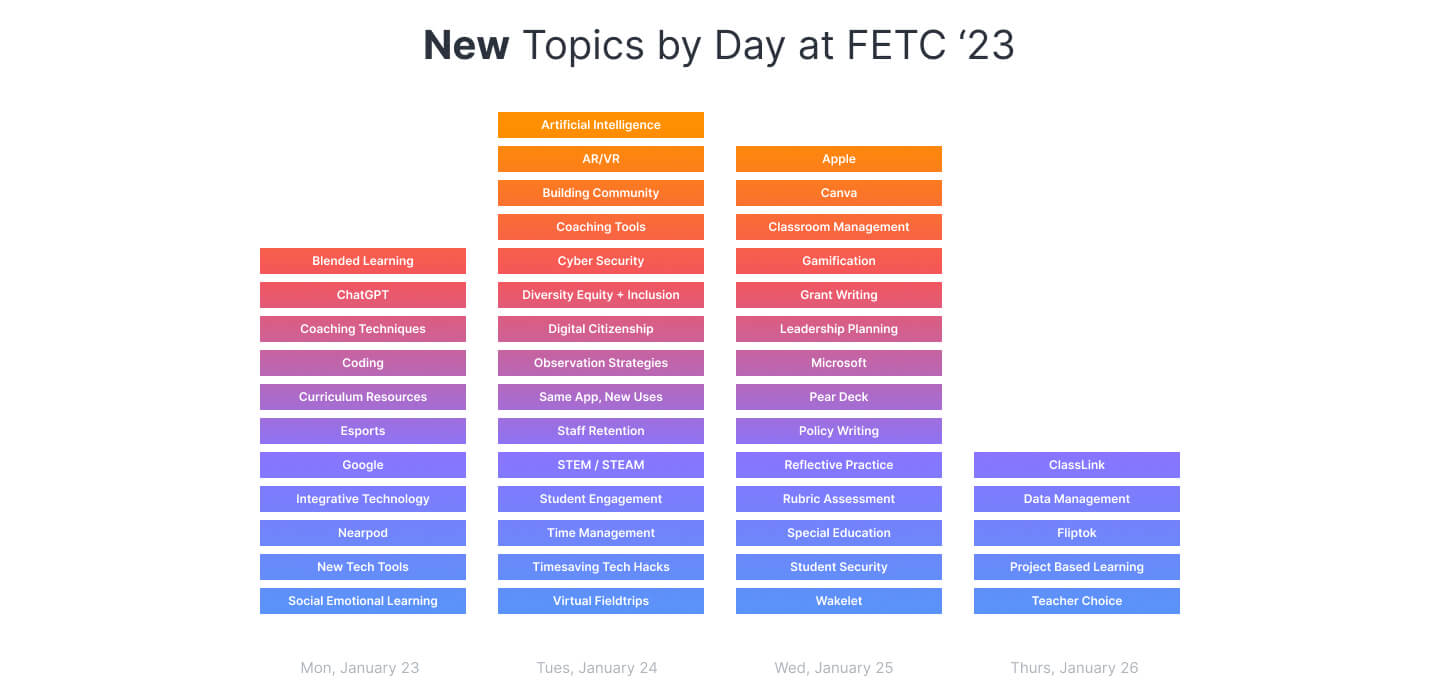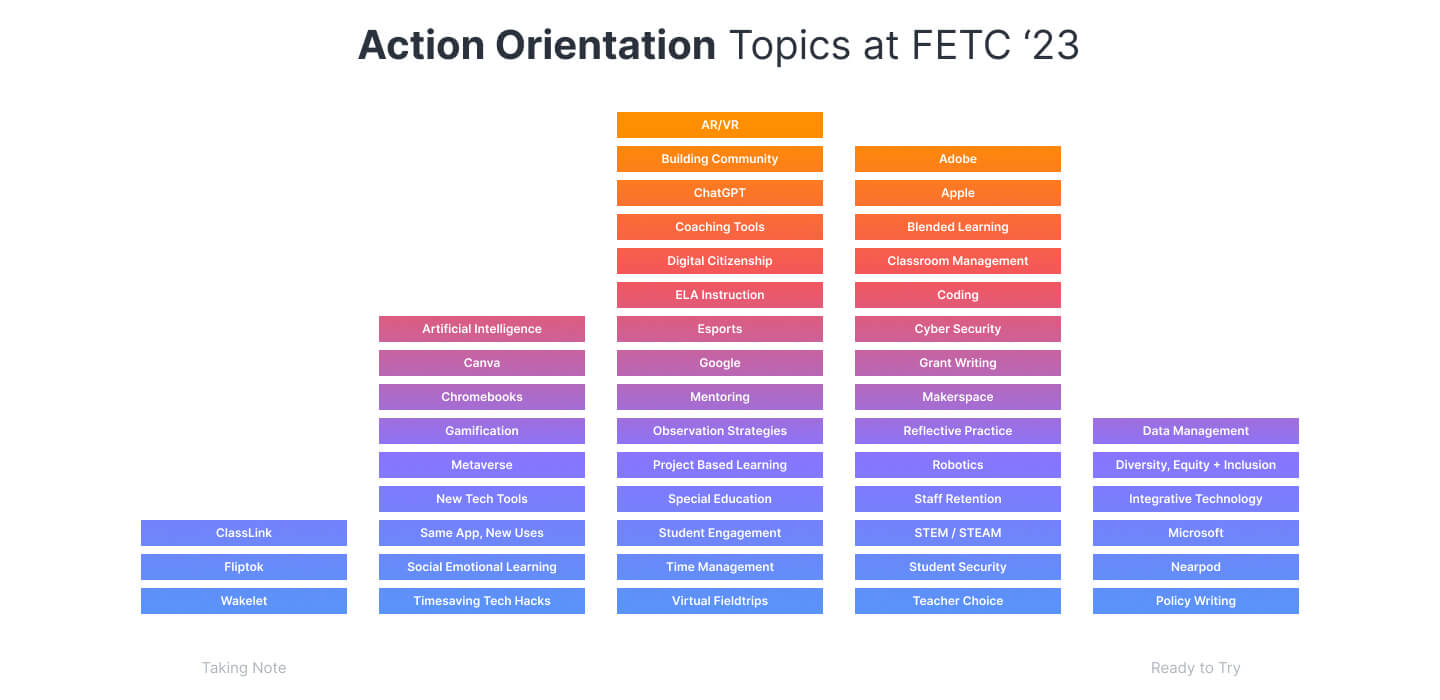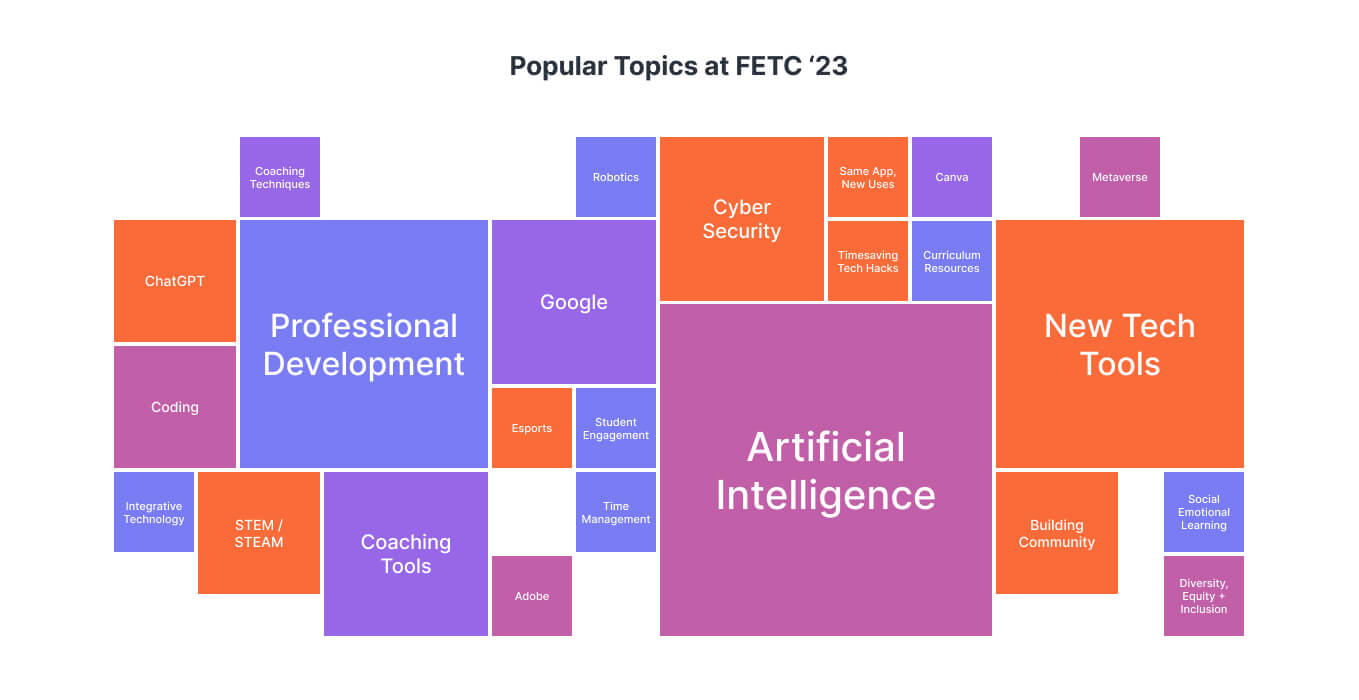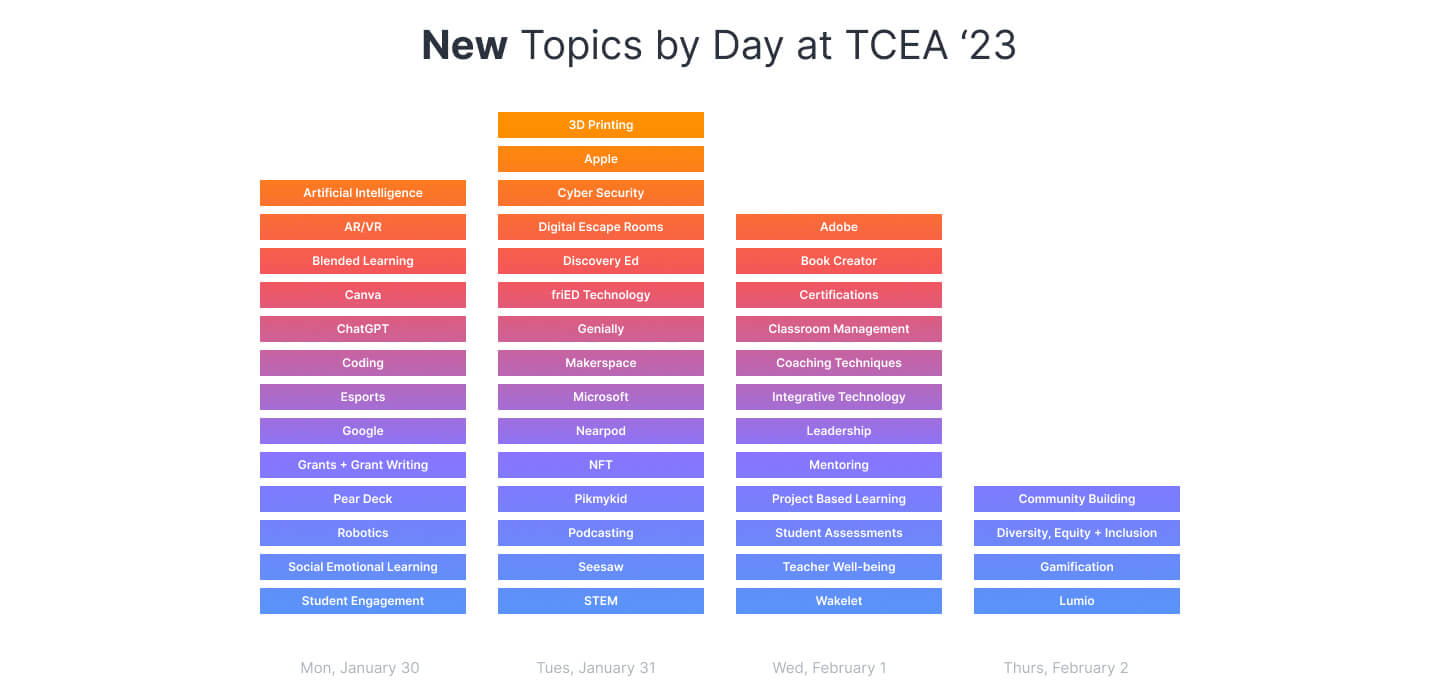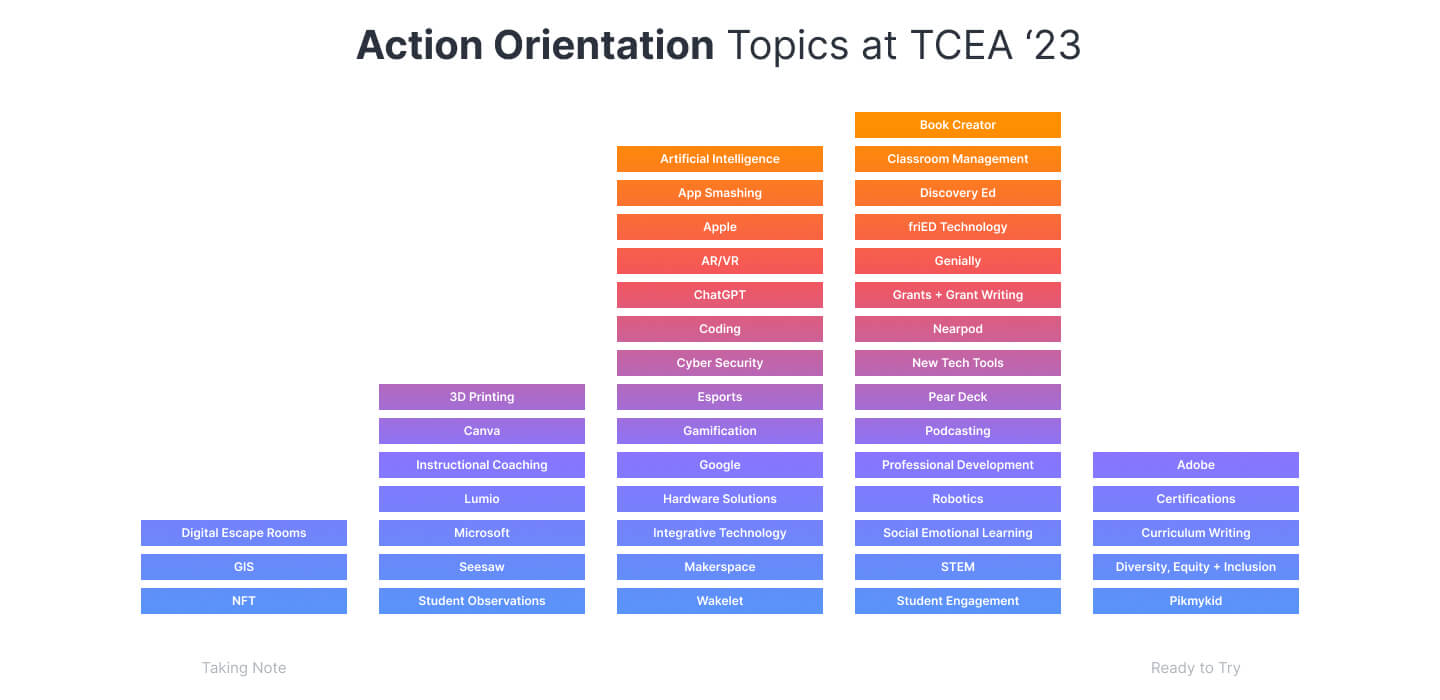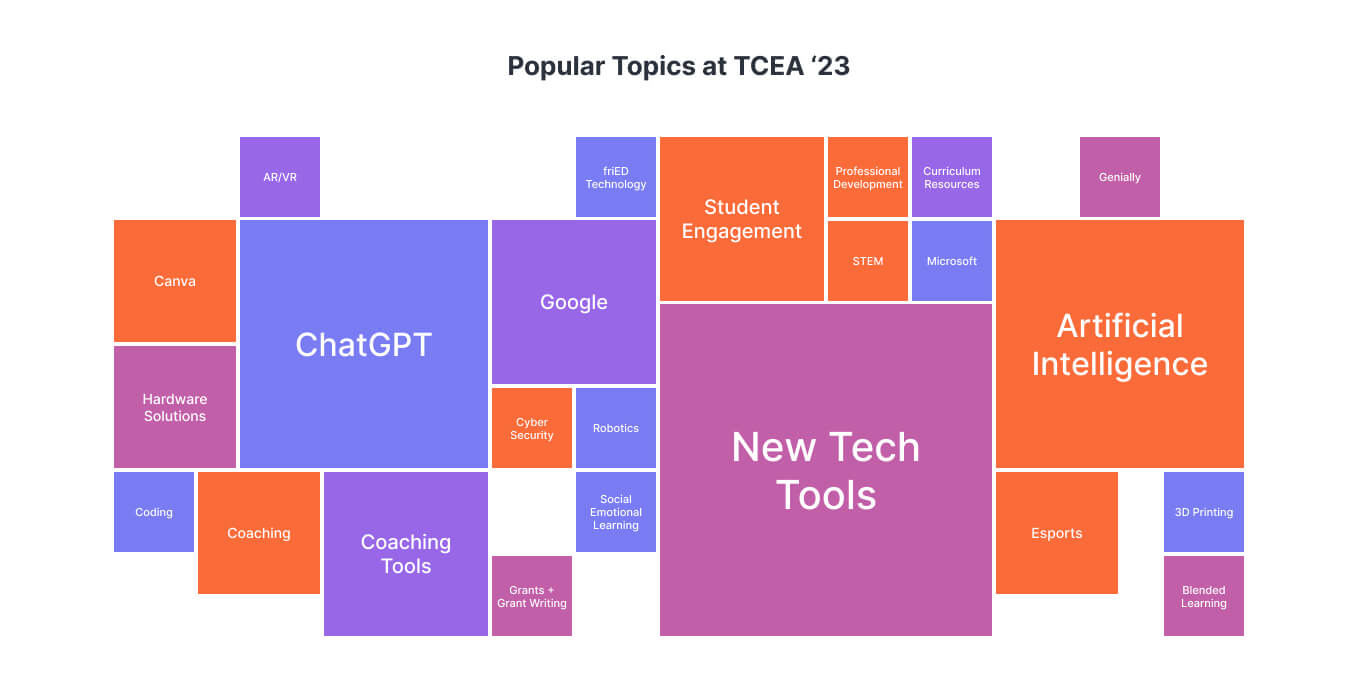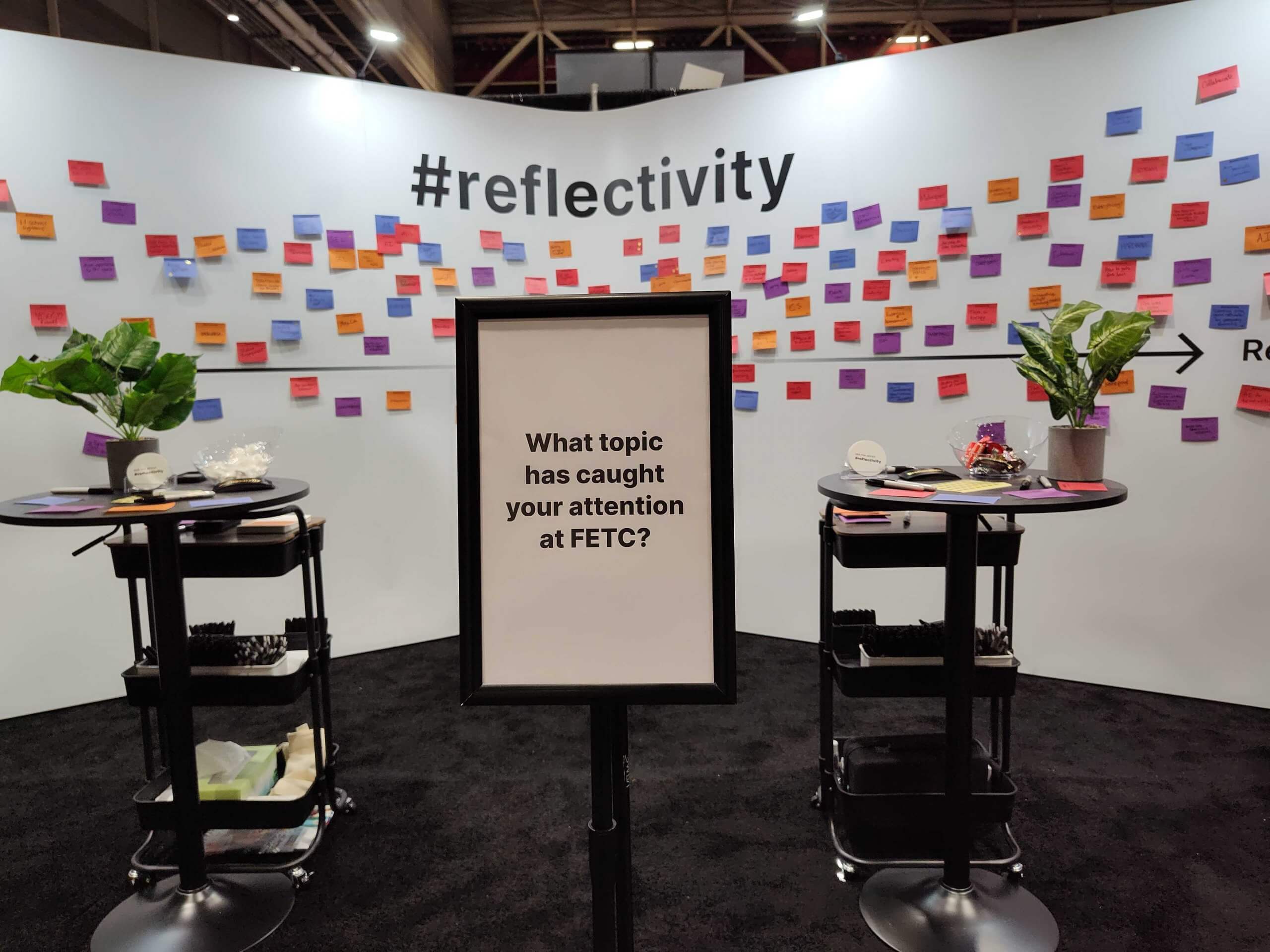
Helping educators reflect on what they were learning during each conference had a surprising impact
At Swivl, we create tools that help educators build reflective practices. To say we think a lot about reflection is an understatement. Reflection drives everything we do. It should not come as a surprise that as we were preparing to attend FETC and TCEA we began by reflecting on all of the events we have attended over the past 12 years.
While reflecting, we had two realizations:
- There is an abundance of learning happening at education conferences
- There isn’t a lot of deep reflection happening at education conferences
The lack of time to reflect during the conferences is significant. The best way to absorb new information—learn and grow—is to reflect on it. Do I have enough information to implement what I’m learning in my classroom/school/district? Can I see myself using the new strategy I learned in this session with my students/teachers?
Without taking the time to reflect, thinking processes aren’t complete.
With these realizations at the forefront of our planning, we decided to create a booth experience that helped to complete educators’ thinking processes. We wanted to see if we could accelerate the learning and growth of the whole education industry.
And with that, #reflectivity was born.
#reflectivity is giving educators, coaches, and administrators the chance to think about what they’re learning. It prepares them to go back and try what they’re learning instantly, instead of having to go back and do their own thinking.
Technology Coach
What topic has caught your attention?
Our experiences, both in creating reflective tools and on exhibit hall floors, have taught us that the key to progressing an educator’s thinking is to keep things simple. Really simple.
Keeping that in mind, we designed the in-booth experience around the simplest form of reflection, answering one question in as few words as possible. We landed on the question: What topic has caught your attention?
When educators stopped by the booth, they could see the question, stop and think, then write their answer on a sticky note to add to the booth’s backdrop, the #reflectivity Board.
To help progress the educators’ thinking beyond identifying topics, we designed the #reflectivity Board to include an Action-Orientation Line. This Action-Orientation Line comprised two sentiments:
- Taking Note: Needing to gather more information before feeling confident to try the topic in a classroom or with teachers
- Ready to Try: Feeling confident to immediately implement the topic in a classroom or with teachers after the conference
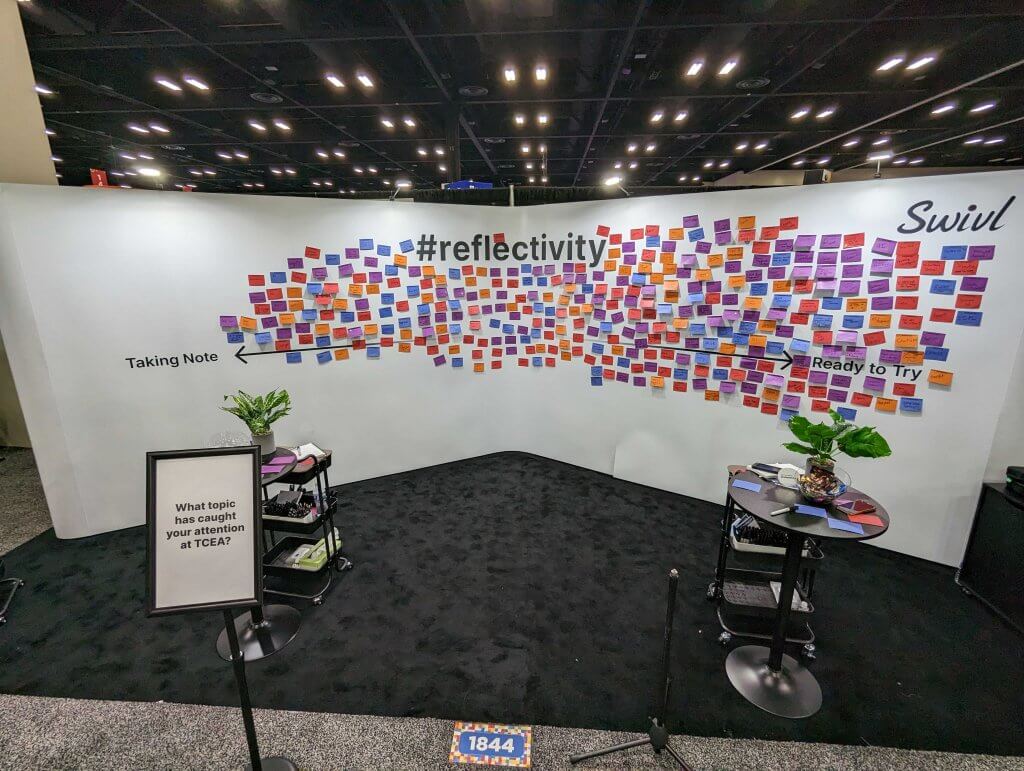
Over the course of both events, we talked to over 1000 educators—teachers, coaches, directors, principals, and administrators. As we synthesized our experience at both events with all of the topics educators added to the #reflectivity Board, we began to see the impact of #reflectivity.
A surprising impact
Before the events, we were hopeful that educators would enjoy participating in a reflective exercise. What we did not anticipate was how energizing the activity would be for everyone who participated.
During each conference we saw #reflectivity energize educators in three main ways:
- They were excited to share what they were learning about
- They gained clarity as they identified where they were on the Action-Orientation Line
- As they read other educators’ answers, they were inspired to learn about other topics
I enjoyed being able to read other people’s thoughts. It gave me an opportunity to reflect on ideas that I felt the same about, and helped me realize things I can take back to my campus as well.
Library Media Specialist
Our conversations with educators after they participated in the #reflectivity exercise showed us how valuable the information captured on a #reflectivity Board is. Teachers felt excited to share what they were thinking with others—it gave them a voice and built a sense of community. Instructional Coaches viewed #reflectivity as a formative assessment to help them gain insights to inform their professional learning practices. Administrators saw the value of disaggregating the data from veteran and new teachers to find common topics to help with PD plans.
And those are only a small sampling of the types of conversations we had with educators about how they could use the data in their classrooms, schools, or districts.
The #reflectivity Board data
After the conference we segmented the data from the sticky notes collected at each of the events into three boards:
- New Topics by Day. This board shows when topics first appeared on the #reflectivity Board.
- Action-Orientation Topics. For each of the topics on the #reflectivity Board, we assigned them a number (1 = Taking Note, 5 = Ready to Try) based on where they were located on the Action-Orientation line. This board represents the average Action-Orientation score for each of the topics.
- Popular Topics. This board shows which topics were the most mentioned topics on the #reflectivity Board.
As we synthesized the data, we continued to see the value that this data can have for the education industry. Let’s use Artificial Intelligence (AI) as an example topic.
At FETC, AI was the most mentioned topic on the #reflectivity Board. AI first appeared on the Board on the first day of FETC, before the exhibit hall opened! At the end of the conference, AI had an average Action-Orientation score of 2—the majority of educators who picked AI as their topic were still gathering information and didn’t feel prepared enough to try AI in their classrooms yet.
At TCEA, AI was the second most mentioned topic on the #reflectivity Board. AI first appeared on the Board on the first day of TCEA, before the exhibit hall opened. At the end of the conference, AI had an average Action-Orientation score of 3—there was a healthy mix of people who were Taking Note of AI and who were Ready to Try.
For teachers, this data is an indicator that advances in AI are impacting the classroom rapidly. AI is a topic to become knowledgeable about and to explore if there are ways to incorporate AI in their classroom.
For admins, not only is this data an indicator that advances in AI are impacting the classroom rapidly, it’s also an indicator to allocate resources toward this topic. For example, helping teachers understand the pros and cons of AI in the classroom, providing strategies and resources to help students to become better digital citizens, and giving teachers the opportunity to explore AI together.
As you review the information in the charts below, think about how you could use data like this to energize your classroom, school, or district.
#reflectivity at FETC
#reflectivity at TCEA
Bringing #reflectivity to classrooms and schools
The enthusiasm and energy we experienced at FETC and TCEA led us to build a product—called Reflectivity—to create a similar experience in schools and districts on a day-to-day basis.
If you’re interested in trialing Reflectivity in your school or district, let’s talk! Email us at success@swivl.com.
